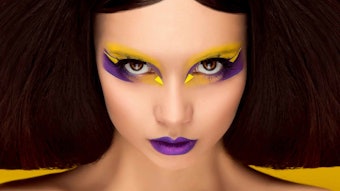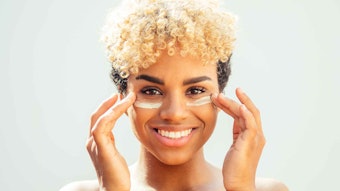Hair is composed mainly of the protein keratin; the same protein found in skin and nails. The natural color of hair depends on the ratio and quantities of two other proteins, eumelanin and phaeomelanin. Eumelanin is responsible for brown to black hair shades. Phaeomelanin is responsible for golden blond, ginger and red colors. The absence of either type of melanin produces white or gray hair.
People have been coloring their hair for thousands of years using plants, minerals and other natural materials. Some natural coloring agents contain pigments, i.e., henna, black walnut shells and iron oxide minerals, while some contain natural bleaching agents, lightening agents or materials that react for color change such as vinegar or lawsone (found in henna).
Natural pigments generally work by coating the hair shaft with color. Some natural colorants last through several shampoos cycles but are not necessarily safer or more gentle than today’s modern formulations. It is difficult to get consistent results using natural hair colorants, and some people may be sensitized or allergic to natural ingredients.
The difference between temporary and permanent hair coloring systems is the ingredients used in each.
Temporary Hair Color
Temporary or semi-permanent hair coloring agents may deposit acidic (D&C or FD&C) dyes onto the outside of the hair shaft or may consist of small pigment molecules that can slip inside the hair shaft. Most of this color gets washed out after a few washings. This is not as harsh on the hair as permanent hair dyes but care should be taken when using these systems.
The colorants utilized are conventional cosmetic colors such as FD&C Blue No. 1, FD&C Yellow No. 5 and D&C Red No. 33. These colorants are not considered reactive or oxidative dyes. Using these primary colors in the correct proportions, a brown dye can be created as well as shades in between. The trade-off is that although they do not last as long as permanent hair dyes, they are safer to use.
Permanent Hair Color
In the permanent hair dying process, hair lightening or bleaching (usually with hydrogen peroxide as the primary oxidizing agent) is used to lighten the hair and remove the original color prior to the dying process. The bleach reacts with the melanin in the hair shaft removing the color in an irreversible chemical reaction. The bleach oxidizes the melanin molecule, and although the melanin is still present, the oxidized molecule is now colorless. The hydrogen peroxide breaks chemical bonds in the hair, which releases sulfur that accounts for the characteristic odor of the hair coloring process.
The outer layer of the hair shaft, or cuticle, must be opened with ammonia before permanent color can be deposited into the hair. Once the cuticle is open, the dye reacts with the inner portion of the hair or cortex to deposit the color. This process essentially damages the hair.
Permanent hair colors or coal tar hair dyes are oxidative and use a two-step simultaneous reaction that first removes the original color from the hair and then deposits the new color. It is the same process as lightening, except that color is chemically bonded within the hair shaft. Conditioners close the cuticle after coloring to seal in and protect the new color. This type of hair coloring system can last weeks or until the system is reapplied to begin the coloring process again. An example of a permanent hair dye is phenylenediamine (PPD) (CAS# 105-50-3).
Other organic compounds are responsible for creating different hair dye colors. These ingredients are called couplers. Blue hair dyes include 1,3-diaminobenzene (CAS# 25265-76-3) and its derivatives. Shade variations for all hair dyes are based on different reaction products. Red hair dyes include 3-aminophenol (CAS# 591-27-5), 5-amino-2-methylphenol (CAS# 2835-95-2) and 1-naphthol (CAS# 90-15-3). The combination of 2,5-diaminotoluene (CAS# 95-70-5) with 3-aminophenol gives a magenta-brown dye, while the combination of 2,5-diaminotoluene with 1-naphthol gives a purple dye. Yellow-green hair dyes include resorcinol (CAS# 108-46-3), 4-chlororesorcinol (CAS# 95-88-5) and benzodioxoles (CAS# 274-09-9). These compounds produce broad-band absorption when they react to form colors, allowing for more natural-looking hair colors. The combination of 2,5-diaminotoluene with the coupling agent resorcinol gives a greenish-brown dye. These chemicals are all highly reactive and can be extremely hazardous to use. They can burn the skin or cause irritation, and can be extremely toxic to some individuals.










